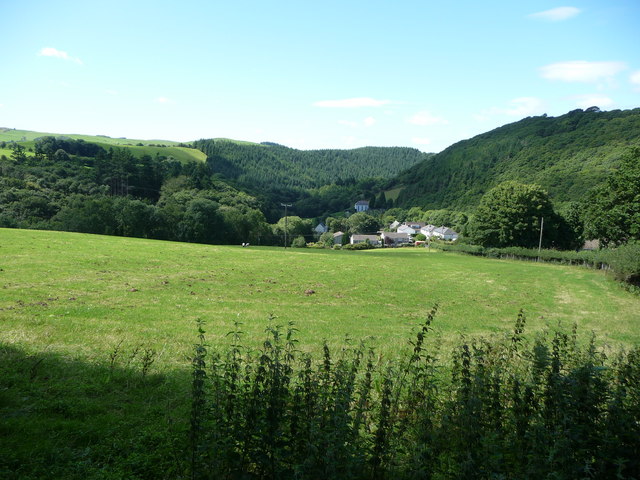The Mystery of the Missing Internet, Rural Wales Edition

Pictured above, nestled in all that greenery, is Aberhosan, a tiny village of 400 or so people in the Welsh county of Powys. There’s not a lot there; as noted in its rather sparse entry on Wikipedia, “the village school closed before 1971 and is now the village hall. The village has a chapel but its shop has closed.” But it’s probably an otherwise nice place to live, particularly if you’re a fan of peace and quiet.
But starting in the spring of 2019, something went wrong in Aberhosan — the Internet stopped working. Not entirely, and not all the time, but often enough where residents began to complain and Openreach, the local telecom company, needed to investigate. Like most rural areas, investments in infrastructure weren’t enormous, and as demand for broadband Internet access has increased, the amount of bandwidth that the existing infrastructure could provide was likely no longer up to the task. The solution, Openreach figured, was therefore rather simple: all they needed to do was replace the cables in the village.
So they did that — and it didn’t help. Every morning, at about 7 AM, the Internet disappeared from Aberhosan.
And then an hour or two later, give or take, it came back.
The telecom company was baffled. They replaced what could be replaced, fixed what could be fixed, and probably even tried some regular old hopes and prayers that the problem would just go away. But for 18 months, the problem kept repeating itself. With most of the country in lockdown by then because of the COVID-19 pandemic, the problem became an even bigger issue for the residents of Aberhosan; not only could they not really go anywhere, but they also couldn’t reliably use the Internet while stuck at home.
Openreach was out of ideas — except for one. Aberhosan’s broadband internet came via something called a digital subscriber line, or DSL. And it turns out that DSL — unlike, say, cable or fiber — is susceptible to interruption if there’s a large burst of electrical noise nearby. But noises like this, called REIN (“Repetitive Electrical Impulse Noise”) or SHINE (“Single High-level Impulse Noise”) (the similarity to the saying “rain or shine” is a coincidence), are hard to find. You need a specific type of tool — a spectrum analyzer, if you’re curious — in order to readily detect it, and you need to have that tool running when there’s electrical noise in the air. So in September of 2020, with all other options exhausted, Openreach decided to check for SHINE as a last resort. Michael Jones, an engineer for Openreach, explained the process to the Guardian:
As a final resort, we decided to bring in a crack squad of engineers from the chief engineer’s office who were based in other parts of the UK to investigate.
We wanted to do one final test to see if the fault was being caused by a phenomenon known as Shine (Single High-level Impulse Noise) where electrical interference is emitted from an appliance that can then have an impact on broadband connectivity.
We walked up and down the village in the torrential rain at 6 AM to see if we could find an electrical noise to support our theory. And at 7 AM, like clockwork, it happened. Our device picked up a large burst of electrical interference.
The culprit? Piers Morgan.
Yes, the UK television celebrity.
Well, kind of. More accurately, as Wales Online reported, every morning at 7 AM, an older couple in the village would turn on their television to watch Piers Morgan on Good Morning Britain. To do so, they needed a television, and that was a problem easily solved — for cheap. For the equivalent of about $50, they had bought a used TV, likely made in the 1980s (and certainly well before household broadband existed), and didn’t really think much about the invisible consequences of that decision. It turned out that the old TV was sending out all sorts of electrical noise when they turned it on. Openreach detected the signal coming from their house, knocked on their door, and explained the issue.
And as Jones told the Guardian, that solved the problem: “As you can imagine when we pointed this out to the resident, they were mortified that their old secondhand TV was the cause of an entire village’s broadband problems, and they immediately agreed to switch it off and not use it again.”
Bonus fact: Not too far from Aberhosan is Knucklas, another village in Powys. Knucklas, though, is famous for a different type of disaster — a tire fire. In 1989, the Knucklas region called Heyope was home to a huge tire dump, and for some reason, someone decided that was a good target for arson. The fire, fueled by the approximately 10 million tires in the dump, raged for 15 years, only being extinguished in 2004 (as explained in this pdf).
From the Archives: A Wales of a Mistake: A sign that doesn’t say what they thought it said.
